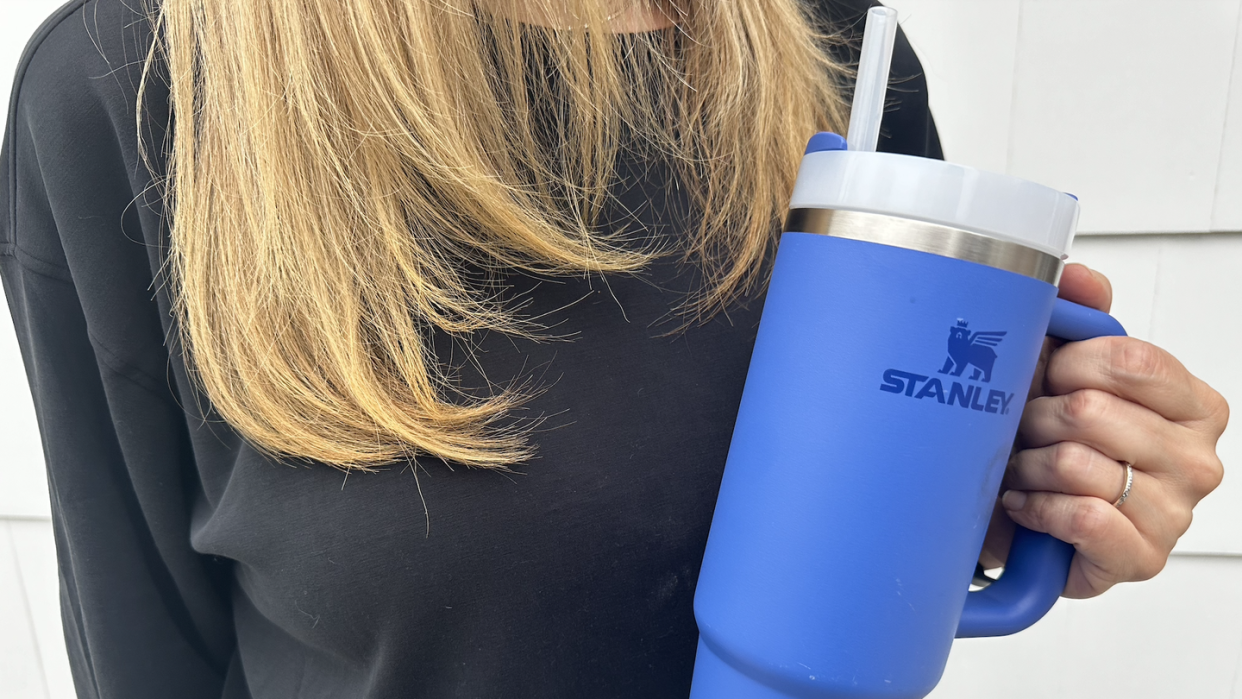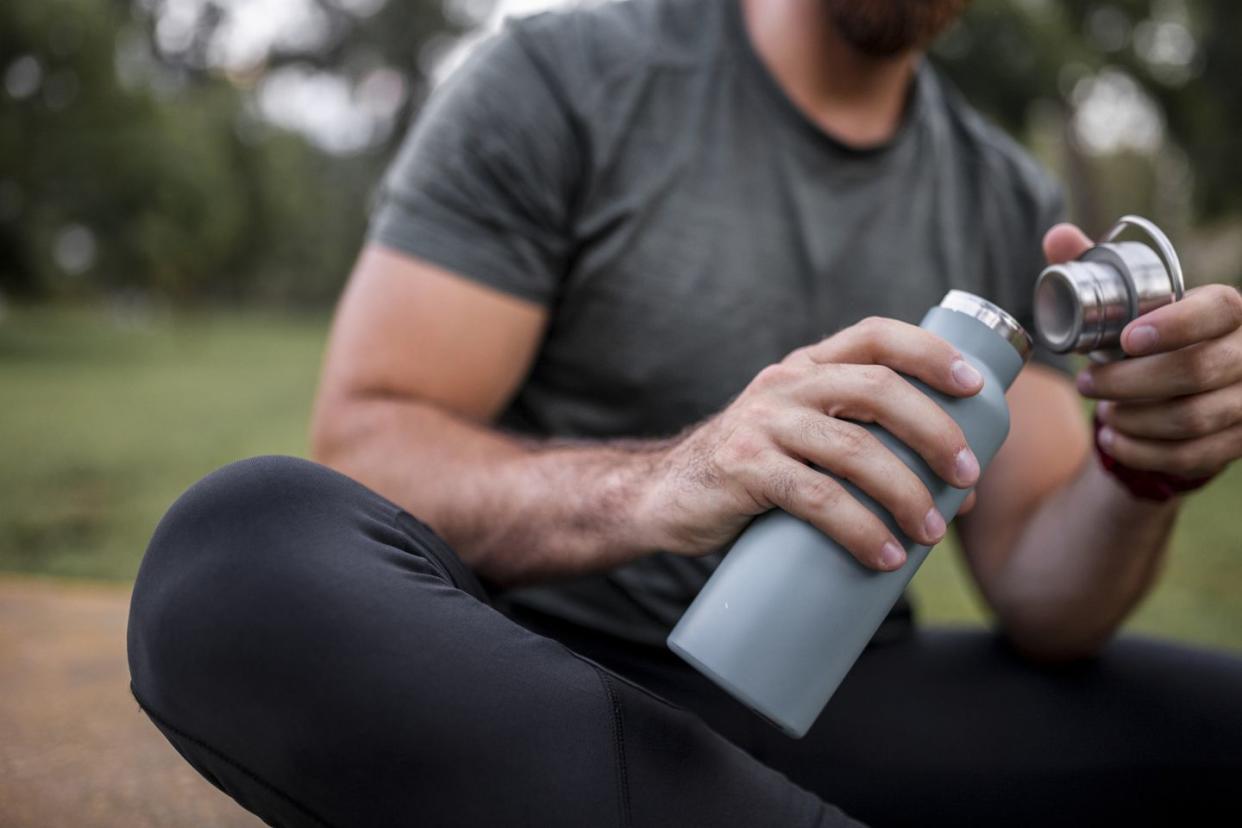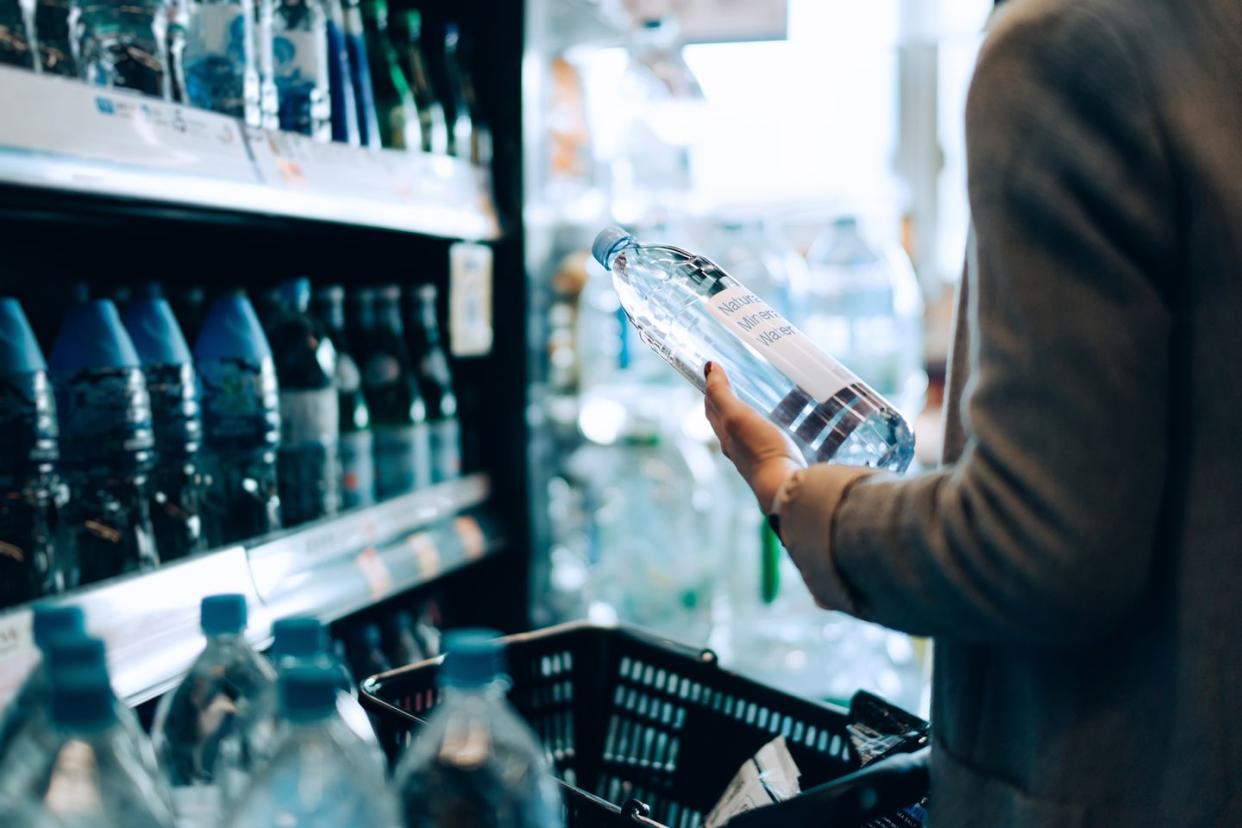You Are Probably Drinking Too Much Water, Say Experts

"Hearst Magazines and Yahoo may earn commission or revenue on some items through these links."
Water didn’t used to be cool. My childhood was filled with Capri Sun, Kool Aid, and Sunny D. We never needed an indestructible $40 water bottle to signal our status at school, just enough juice boxes to barter with at recess.
But in 2024, if you don’t drown yourself in water all day, it's like you’re doing something wrong.
Before Stanley cup mania, there was Camelbak, Hydroflask, S’well, and Yeti. And if water bottles with motivational phrases like way to go and keep chugging don’t encourage you enough, there’s always #watertok with recipes to make your water taste like anything but water.
Sure, drinking water is essential to staying alive, but over the years it’s become a sort of magical cure-all for any ailment. Bad skin? Drink more water. Want to lose weight? Drink more water. Tired and stressed? You guessed it—water.
Beyoncé drinks a gallon of water a day. Why shouldn’t you?
Perhaps my two-year-old self should have noticed the warning signs of the hydration propaganda wave with the launch of Gatorade Frost Thirst Quenchers in 1997. And now here we are, drinking cans of ironically-named Liquid Death in a quest to stay alive.
But do we really need to be drinking this much water? Or have we just fallen prey to marketing and Big Wellness?

More Is Not Always Better
Thirst has become public enemy No. 1, so we try to drink water throughout the day. Do we even remember what it’s like to truly crave an ice-cold glass of water?
While dehydration is way more common, it’s actually less dangerous than overhydration, according to Dr. Tamara Hew-Butler, associate professor of exercise physiology at Wayne State University. She said that the body has several mechanisms to protect us from dehydration, like feeling thirsty and deploying water-conservation mechanisms. But this isn’t the case for overhydration.
“Without water, we will die over the course of a few days,” she said. “But drinking too much water all at once will kill us in a matter of hours.”
You’ve probably heard that you should drink eight glasses of water a day. Hew-Butler said this is based on the fact that water turnover in the body is about two liters or eight glasses per day. How much water you actually need, however, depends on a variety of factors, such as body size, activity, and temperature.
When speaking with her clients and athletes, Amy Stephens, a licensed dietician who specializes in sports nutrition, emphasizes individuality, noting that there isn’t a set guideline for how much water to drink every day. Drinking too much water, she adds, can also displace nutrient-dense foods.
For young men and women aged 19 to 30, the National Academy of Medicine recommends total water intake to be about 13 cups and 9 cups, respectively. This includes all water consumed from both beverages and food.
About 20 percent of your water intake comes from the food you eat, according to UCLA Health. Cucumbers are 96 percent water, and spinach and strawberries are 92 percent water. And even if you’re not eating salads and munching on apples every day, you’re still getting fluids from drinks like juices, coffee, and tea.
In other words? We probably don’t need to be chugging from a big tumbler all day, every day.
“More is not better when it comes to water intake with regards to enhancing health or performance,” said Hew-Butler. “In fact, people can (and do!) die if they drink too much water.”
Yes, your body can become intoxicated by water. Referred to as hyponatremia, the condition occurs when you essentially drink so much water that the sodium in your blood becomes diluted. It’s often associated with athletes who lose salt and fluids through sweat. They hydrate with water, which further dilutes their blood. This is why many athletes fuel up with electrolytes and sports drinks instead.
Athletes aren’t the only ones susceptible to overhydration. In an interview with Glamour last fall, Brooke Shields said that she suffered a grand mal seizure from drinking too much water. “I flooded my system, and I drowned myself,” she said.
Humans are about 60 percent water, which fuels the trillions of cells in our body responsible for keeping us alive. But flooding our bodies with too much water can do just the opposite.
With similar symptoms such as headache, fatigue, nausea, or vomiting, it can be difficult to diagnose dehydration and overhydration. But staying properly hydrated? That’s not as challenging as it’s made out to be.
Thirst is not the enemy. Rather it’s the key to maintaining proper hydration. Hew-Butler recommends drinking when you’re thirsty. Just like feeling hungry and needing to urinate, she said that fluid balance is a physiologically regulated variable. This means that our body tells us what it needs.
“The sensation of thirst arises from sensors in the brain that are constantly ‘sampling’ the blood for the perfect balance and water and salts,” she said.
Urine color can also be an indicator, although it’s perhaps not as reliable. Stephens said it should be a pale yellow.

The Monetization And Gamification Of Hydration
“I humbly believe that the overemphasis on hydration is unique to more affluent societies (like the U.S.), where aggressive marketing convinces people to buy products that we don't need,” said Hew-Butler.
Only in the United States could drinking water be such a grueling task that we need tracker apps and water bottles screen printed with motivational phrases. Coinciding with the rise of artisanal water and “wellness,” we can pinpoint eras based on its popular reusable water bottle. The S’well and crossfit gym of the 2010s are out of style; today it’s the Stanley Quencher, CBD, and #watertok recipes.
“I find it astonishing that people feel compelled to buy water in plastic bottles—and now fancy-looking recyclable water bottles—when water flows freely out of taps, fountains, and garden hoses,” said Hew-Butler.
It all began with the rise of the disposable water bottle.
In 1978, Perrier launched its bottled water brand in the U.S., and others quickly followed. From 1977 to 2022, bottled water sales grew every year, except during the Great Recession in 2008, according to the Beverage Marketing Corporation (BMC), peaking at 15.9 billion gallons in 2022.
While BMC reports that bottled water sales hit $25.5 million in 2022, Grand View Research estimates the reusable water bottle market at a whopping $1.9 billion.
Grown adults have been tricked into thinking a basic, human activity is, well, complicated. Hydration has not only been marketed as essential to becoming a better version of ourselves, but as a difficult thing to do properly.
It’s been gamified. Beat the dehydration dragon to reach the next level of wellness. But to do that, you have to buy a half-gallon water bottle and keep sipping all day.
But just like the limited supply of lives in a video game, there isn’t an endless supply of water. While about 71 percent of the earth is covered in water, only about 0.3 percent of it is drinkable, according to the National Ground Water Association.
About half the world’s population already experiences water scarcity at some point during the year. Both water supply shortages and severe weather like flooding and droughts will only worsen as a result of climate change and population growth, according to the United Nations. Even our food supply is reliant on water—about 70 percent of natural water resources goes to agriculture.
A recent study predicts there will be a 40 percent shortfall in the world’s freshwater supply by 2023.
Yet, our thirst has become unquenchable.
You Might Also Like
